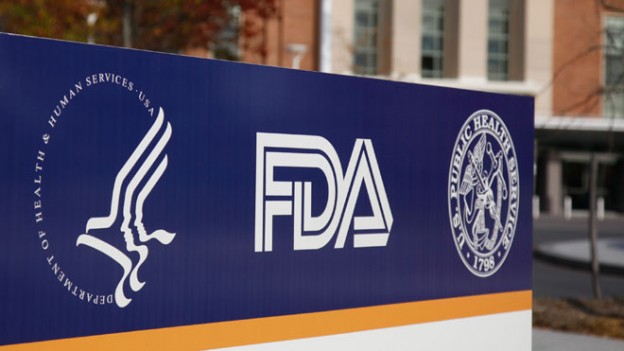How many people have to report an adverse reaction to a prescription drug to trigger an FDA review? Does the FDA track blockbuster drugs more closely than others? How can you find out if an unanticipated long-term effect is uncovered on a drug you’re taking?
We didn’t know either, so we asked the FDA.
The FDA is Responsible for Approving New Drugs and Monitoring Performance
The FDA not only has the responsibility to approve new drugs before they are marketed, the agency is also required to monitor the performance of the drug in the general population. Before approval drugs undergo short-term testing to make sure they work, that they work better than other drugs available and that the harm from side effects is not greater than the benefit. However, testing and research on a few thousand patients in standard drug tests cannot replicate what will be found out about side effects when a drug is used by thousands or millions. Unanticipated long-term effects won’t be known until the drug has been in the marketplace for 3, 5 or 10 years.
The risk that a drug might cause more harm than anticipated is real: In 2013 the FDA issued 82 Safety Alerts, which are recalls or warnings for drugs, and 73 safety alerts for medical devices.
We emailed the FDA 3 questions for publication about adverse reactions to drugs, and about 3 months later we received answers from “B.C.,” a drug information specialist at the FDA. B.C. noted that the Office of Surveillance and Epidemiology was consulted. MedShadow did not edit the questions or responses from the FDA.
If you have an adverse reaction to a drug, no matter how long you’ve been taking it (effects can change with time and/or accumulate in your body), let the FDA know with this easy to fill out form: MedWatch Voluntary Online Reporting Form.
FDA Q&A
MedShadow: Given that there is a system in place (albeit voluntary) to inform the FDA of potential problems with a drug, at what point do a series of similar adverse events become an issue for the FDA to be concerned about? 2 deaths? 6 hospitalizations? 200 complaints?
FDA: There is no specific number that the FDA uses as a triggering threshold to respond to safety concerns when available data reasonably indicate that there is a new safety concern that has not been addressed in the medication’s labeling. This could be prompted by a single uncommon adverse event in one person or a series of similar adverse events for which there is a reasonable possibility that the medication caused the adverse events. The seriousness of the adverse events and patient outcomes, including hospitalization or death, are considered in the context of risk assessment and management for potential appropriate regulatory actions.
MedShadow: Does the volume of prescriptions for a drug affect the level of monitoring? Take a blockbuster drug taken by hundreds of thousands daily – with so many people taking it, does it come under special post-approval scrutiny? Adverse events among, say, 5% of users with a specialty drug that has few alternatives might be acceptable given the risk-benefit scenario. But a 5% side effect with a drug taken by millions of people (and a drug that has alternative therapies available) is a different story. Does the FDA flag blockbuster drugs? Is education and information dissemination to physicians and consumers in that scenario different?
FDA: To gain a sense of frequency of the adverse event, the volume of prescriptions is taken into consideration during safety evaluations, although there is no specific flagging of “blockbuster” drugs. All FDA-approved drugs are being monitored routinely for potential safety signals. FDA will disseminate safety information to the public, including physicians and consumers, for any medication when serious risks have been identified. In some instances, companies may also independently disseminate the safety information and educate the public.
MedShadow: How does a consumer keep updated on newly emerging side and long-term effects of the drugs they are taking? Do they have to wait for the FDA to force the pharma company into a label change? How long does that take, anyway? What is the process?
FDA: If a company (e.g., applicant, manufacturer, labeler, distributor) becomes aware of a reportable adverse experience, the company is responsible for reporting it to the FDA. Once determined that a label change or other regulatory action is warranted, the time required to implement such action depends on the complexity of the safety issue as well as the action. In many instances, the FDA will communicate to the public ongoing safety issues even before actions have been fully implemented.
Important drug safety information can be found on the FDA’s Drug Safety Communications website, which contains the most recent Drug Safety Communications from FDA as well as links for Early Communications, Follow-Up Early Communications, Information for Healthcare Professional sheets, and Public Health Advisories.
Consumers can keep updated on newly emerging side effects by accessing the website below. This website posts “potential” signals of serious risks or new safety information identified from the FAERS database on a quarterly basis. Listing of a drug and a potential signal on this website does not mean that FDA has determined that the drug has the risk, but rather, the “potential” safety issue is being further evaluated to determine the association, if any: Potential Signals of Serious Risks/New Safety Information Identified from the FDA Adverse Event Reporting System (FAERS) (formerly AERS)
Consumers can look up specific drugs with the following website: Index to Drug-Specific Information
In addition, they can sign up for email alerts at the website listed below. Both of these websites provide links to Drug Safety Communications.
Medical Product Safety Information
Drug Information Specialist | Division of Drug Information
Center for Drug Evaluation and Research | Food and Drug Administration







